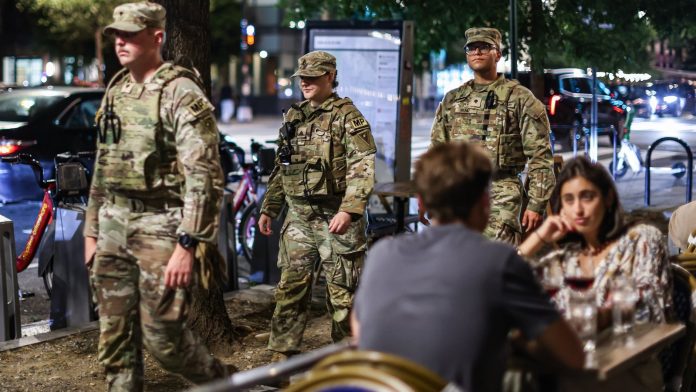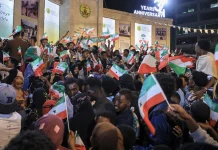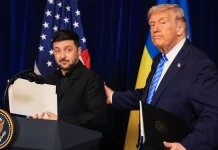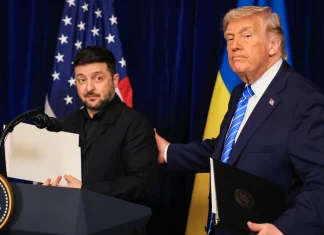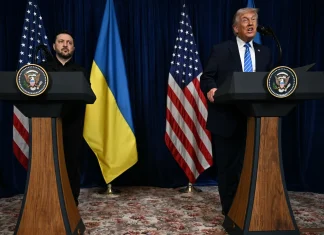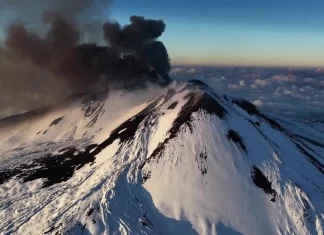National Guard on the Horizon: A New Chapter in Chicago’s Tumultuous Struggle for Safety
Chicago, a city of soaring skylines and vibrant neighborhoods, a mosaic of cultures and a crucible of American urban challenges, now faces another potential upheaval. Whispers from Washington hint at a deepening federal intervention: thousands of National Guard troops poised to step onto Chicago’s streets. This isn’t merely a story about troop deployments—it’s a vivid tableau of politics, public safety, and the very soul of a city grappling with violence and polarized ideals.
In the Eye of the Storm: Unpacking the Federal Strategy
For weeks, according to multiple reports from The Washington Post and other major outlets, the Trump administration has been quietly crafting plans to send several thousand National Guard members to Chicago by as soon as September. The Pentagon, traditionally a bastion of secrecy, neither confirms nor denies the specifics, maintaining a cloak of caution that only fuels speculation.
“The Department is always planning,” one defense official shared, preferring anonymity. “We continually coordinate with agency partners about protecting federal assets and personnel.” Yet the ambiguity surrounding this operation says as much about Jenga-like political dynamics as it does about law enforcement strategy.
This move follows similar deployments, most notably in June to Los Angeles when 4,000 California National Guardsmen and 700 active-duty Marines were sent into the city, despite protests from the state government. And now, Washington, DC, has witnessed a military presence bolstered to the point where troops are reportedly arming themselves in public spaces.
“We’re going to make our cities very, very safe.”
President Donald Trump’s words carry a resolute promise to transform urban safety across major cities. Speaking from the White House, he singled out Chicago and New York, promising federal muscle to combat crime. “Chicago will be our next,” Trump declared.
But safety is a word laden with meaning—and in cities where neighborhoods are stitched tightly with histories of systemic inequities and social activism, “safety” is seldom uncomplicated.
Chicago’s Political and Social Fabric: At the Heart of the Debate
Chicago’s political leaders were swift to push back. Democrat leaders, including Illinois Governor JB Pritzker and Mayor Brandon Johnson, rejected troop deployments outright, framing them as politically charged and counterproductive moves.
“Donald Trump and MAGA Republicans are trying to paint their party as one of ‘law and order.’ That couldn’t be further from the truth,” Governor Pritzker wrote on X (formerly Twitter), his words echoing across a city skeptical of militarized approaches.
Mayor Johnson voiced frustration at the lack of collaboration: “We have received no formal communication from the administration regarding any plans,” he said in a statement to WBEZ Chicago. “Such action would be uncoordinated, uncalled for, and unsound.”
Chicago is no stranger to violence. The grim statistic of 573 homicides so far in 2024—an 8% drop compared to last year—still casts a long shadow over communities battling gun violence, poverty, and under-resourced services. But for those on the front lines like activists, community organizers, and residents, the question isn’t simply how to stamp out crime—it’s how to do so without fracturing the fragile trust between citizens and those in power.
Voices from the Street
Maria Hernandez, a lifelong South Side resident and community organizer, offers a grounded perspective. “Adding more troops might make some people feel safer,” she says, “but it doesn’t fix the fact that many here don’t trust law enforcement. We need jobs, better schools, and mental health support, not just more boots on the ground.”
Meanwhile, Jason Kim, owner of a local bookstore near Wicker Park, worries about the broader implications. “Chicago’s always been a city of resilience. But when you see history repeating—militarization, protests, tear gas—it raises questions. Are we protecting people or just trying to appear tough for political points?”
The Larger Picture: Crime, Immigration, and the Politics of Fear
This impending deployment also dovetails with the Trump administration’s intensified crackdown on undocumented immigrants through Immigration and Customs Enforcement (ICE). The coupling of militarized policing with aggressive immigration enforcement feeds into a larger narrative about security, sovereignty, and American identity.
Yet, as experts like Dr. Leah Simmons, a criminologist at Northwestern University, point out, “There’s little evidence that such large-scale military interventions in urban crime control yield long-term reductions in violence or improved community trust. In fact, they often exacerbate tensions.”
The story unfolding in Chicago is emblematic of a wider trend seen across several major cities — a tug-of-war between federal power and local governance, entwined with racial, social, and political fault lines. And it forces us all to ask: What does true safety look like in a democracy?
Chicago Today: A City at a Crossroads
From the jazz notes drifting out of a Bronzeville concert to the smell of deep-dish pizza wafting beneath the summer skyline, Chicago lives and breathes complexity. It is a place where history lingers palpably in every street corner and community space. And it is precisely in this intricate tapestry that the proposed National Guard deployment threads a delicate, fraught narrative.
How will everyday Chicagoans, who often feel like pawns in larger political games, perceive this move? Will it bring the seismic change promised, or will it deepen divides? And beyond Chicago—what lessons do other cities and nations draw from this unfolding drama?
As night falls over the city of winds, remember this: safety and security are more than the absence of violence—they are the presence of justice, opportunity, and hope. Any strategy that overlooks these essentials risks missing the heartbeat of the communities it claims to protect.
So, dear reader, as we witness this unfolding chapter, ask yourself: In a world increasingly drawn to spectacle and force, how do we reclaim compassion, understanding, and true safety in our cities? Chicago’s story is a mirror—what do you see?


